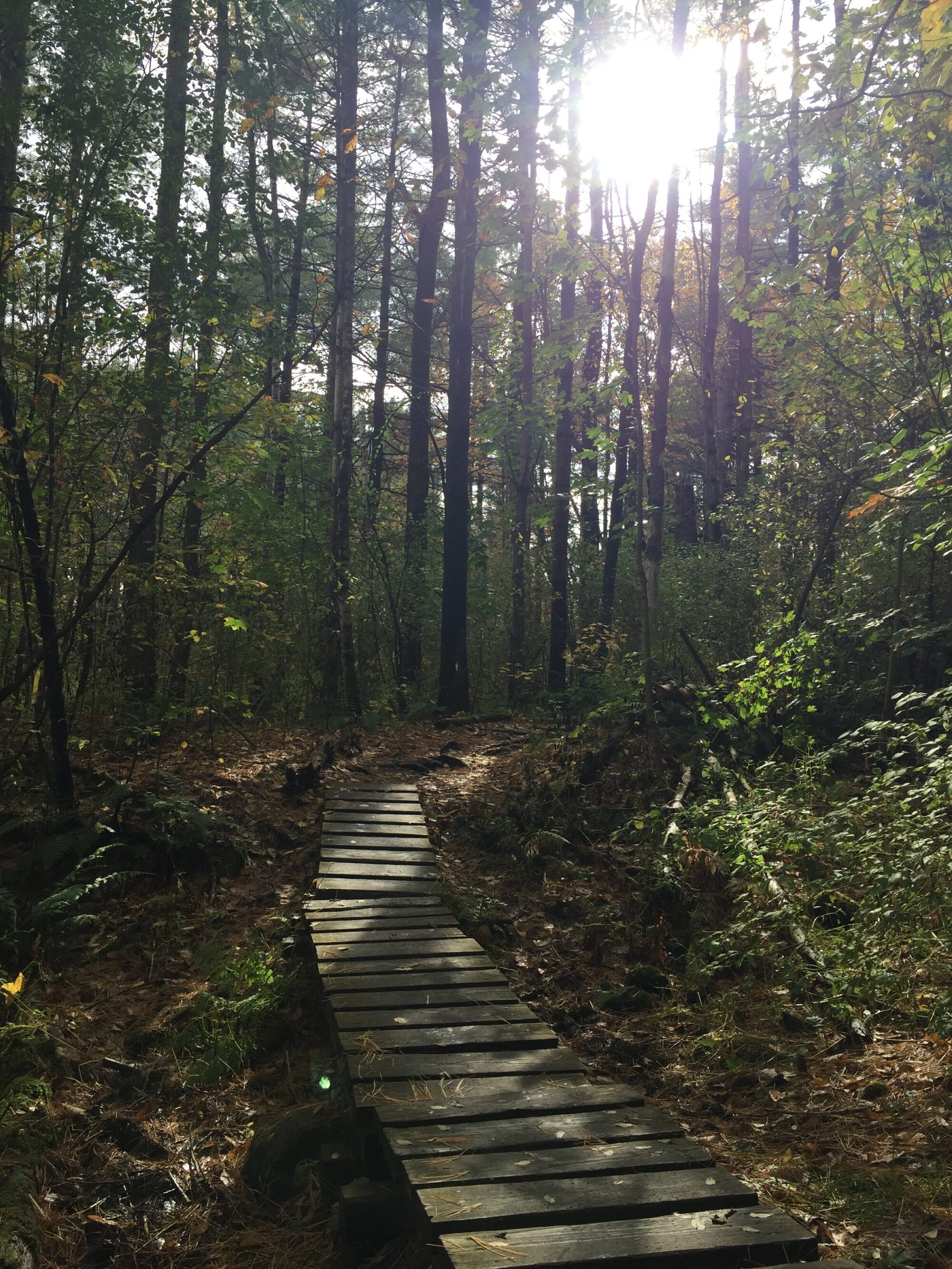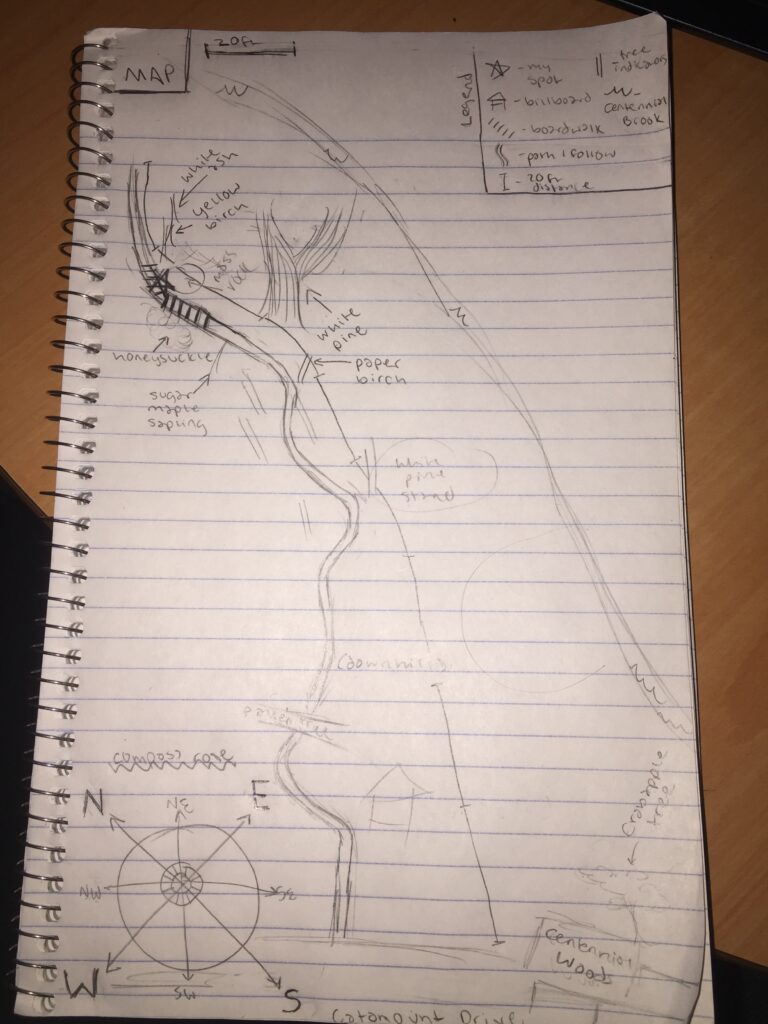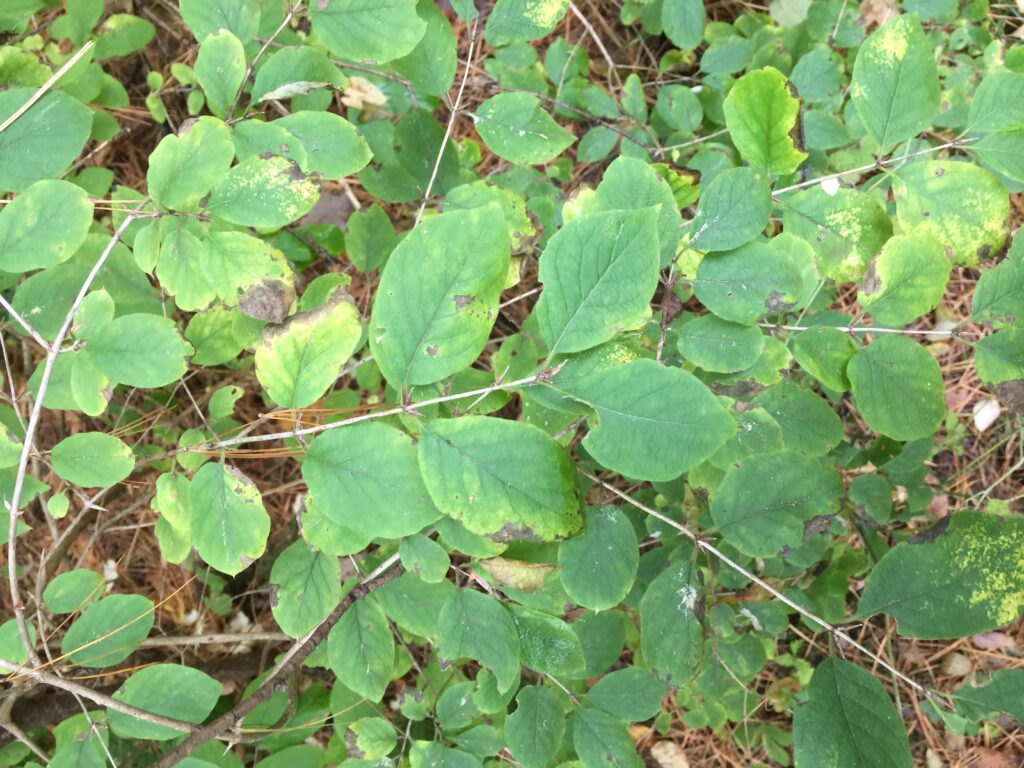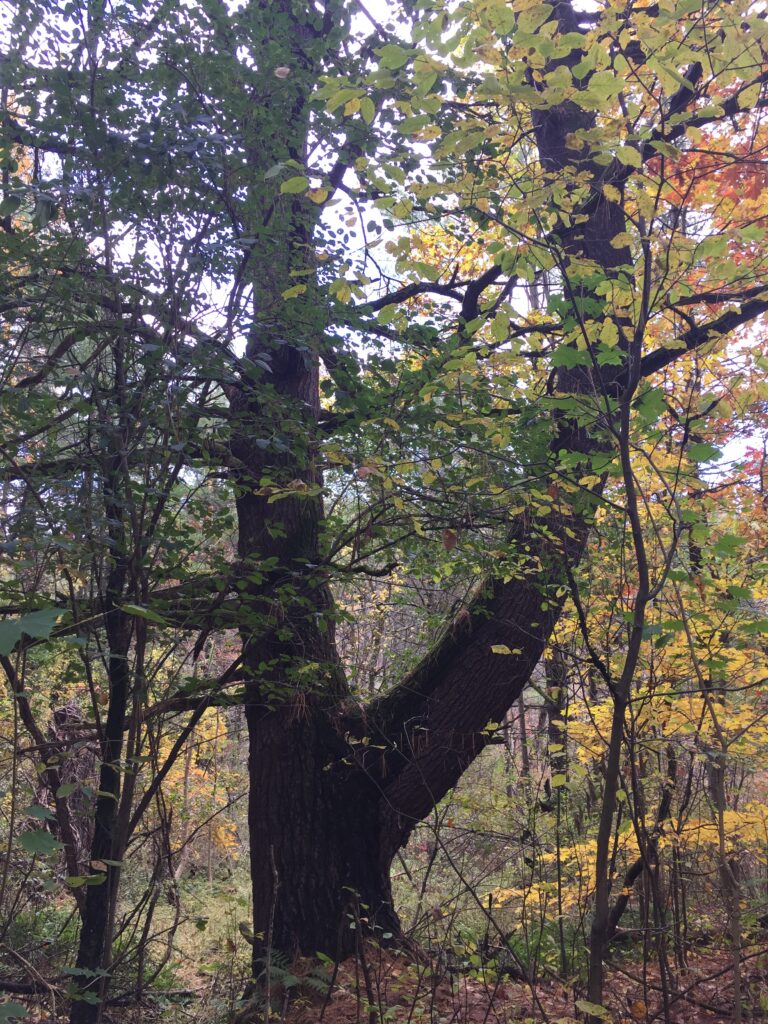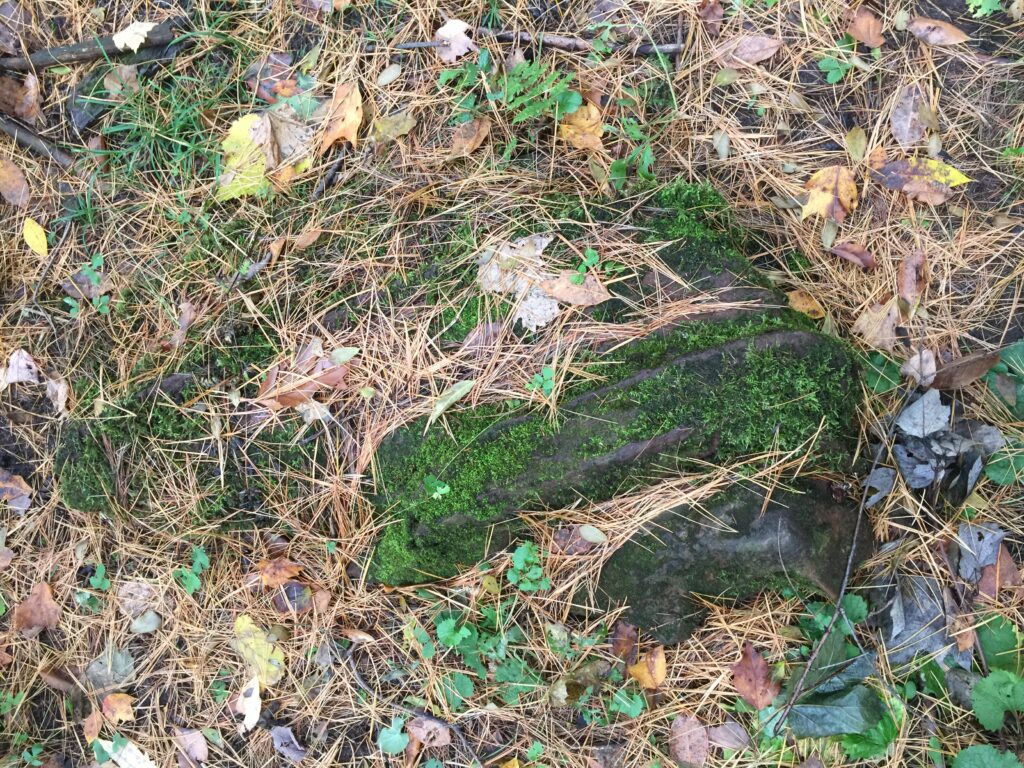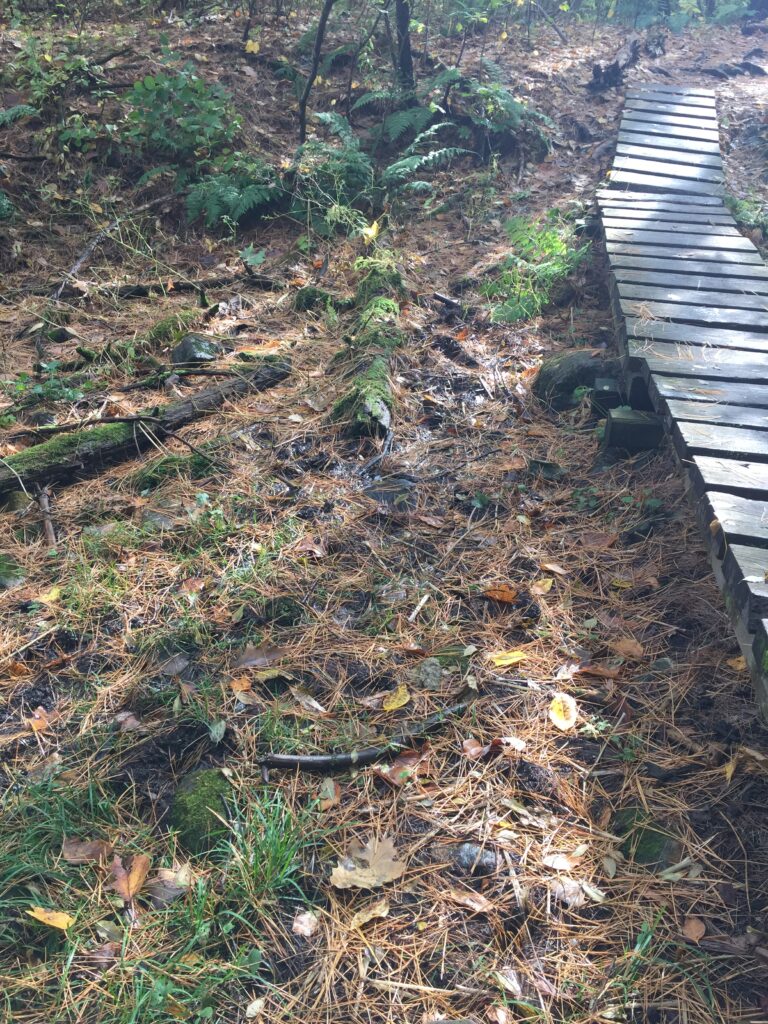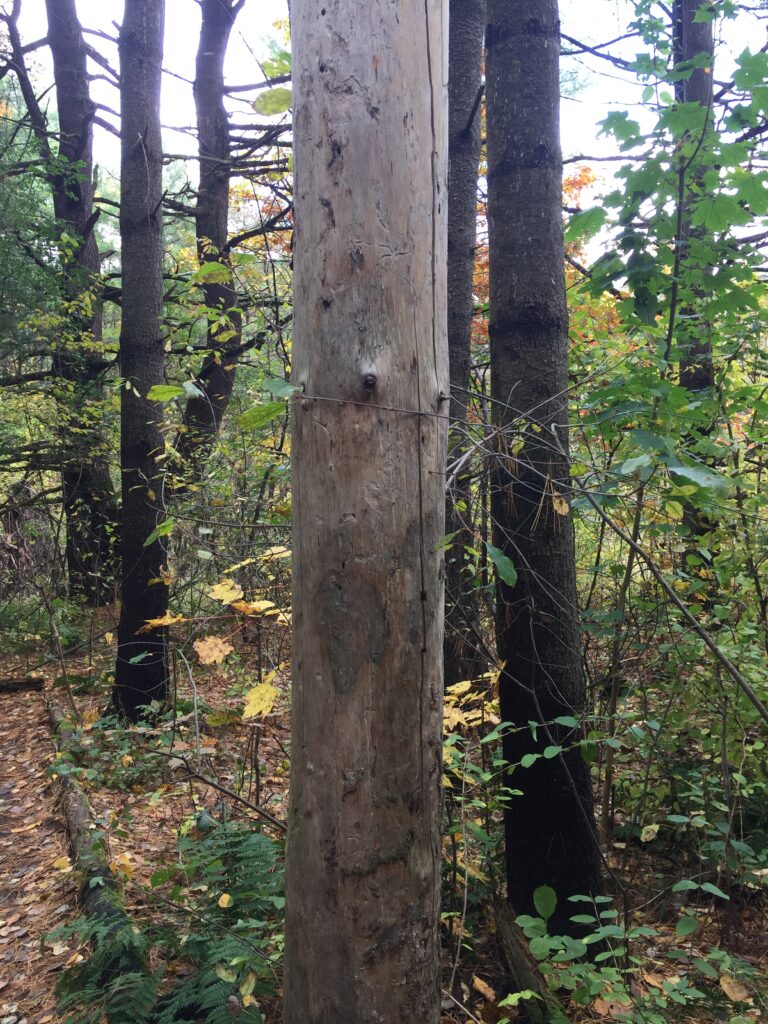My experience with my site at Centennial Woods is one of dual-nature. Ironically, to me nothing is quite as freeing as being surrounded by trees. There’s something about evergreens in specific that make me feel at peace. I prefer darker tones so forest green and dark brown is comforting to see as I sit on the wooden planks and gaze at the mossy rock I’ve been examining for the past couple of weeks. When I sit in my spot I feel both a little bit nervous and comforted. My mother has warned me not to enter a forest alone and each time I do her voice rings in my head. So as I sit, although I realize there are dangers to the woods like wild animals, I am also aware of the atmosphere. The large white pine in front of me emits a powerful energy and there’s something about the snow-covered wooden bridge that makes me feel at peace. This past experience at my spot the wind caused the trees to creak like old doors which was unnerving at times but I learned to respect the sound. The forest felt more alive to me than usual most likely because of this factor combined with the sounds of migrating birds and the last of the leaves falling from the branches.
When compared with Burlington as a whole, my spot in Centennial makes me feel small again, but in a good way. You need somewhere to come home to after exploring and that’s what my spot feels like to me. In terms of all of New England, I feel the same smallness at Centennial but I see many characteristics of my spot scattered throughout the states. I’m sure if I spent the time at any one area i’d develop the same feelings as I have for my spot. Moreover, when I compare Centennial to a specific river across from my house in Connecticut, I feel the same feelings. One is not better than the other as they are both familiar and comfortable. I do believe that a sense of place doesn’t have to be an actual place though. I feel most connected and at home with certain people, but this is a different calm than I would have sitting in the woods alone.
Aside from that, thinking about the evolution of my spot makes me curious. I wonder how it might have looked, if any trees I see there now were there long ago or will be there well into the future. My own history with Centennial has grown as well. The more I visit, the more familiar it becomes to me. However, I believe I felt more at home when I visited during the late summer, early fall months. The warmth added to the comfort of the place which is something winter takes away.
Perhaps my site is a sense of place in Burlington to someone else. Throughout history my site has most likely evolved from forested, to heavily messed with, to recognized. What I mean by this is that it wasn’t really noticed, and the first time it was by settlers it may not have been appreciated as it might have by indigenous people. As time went on, perhaps it was looked at in a more respectful way which leads it to what it is today, as people care for the bridge in the area, they respect what surrounds it. I’m not sure what this place may hold for those in the future or what may happen to it. Perhaps it will become overgrown and the bridge will be swallowed by a sea of green. I feel as though if I were to not go back to my spot for years I would still feel the familiarity when I returned. Such is the power of a sense of place.
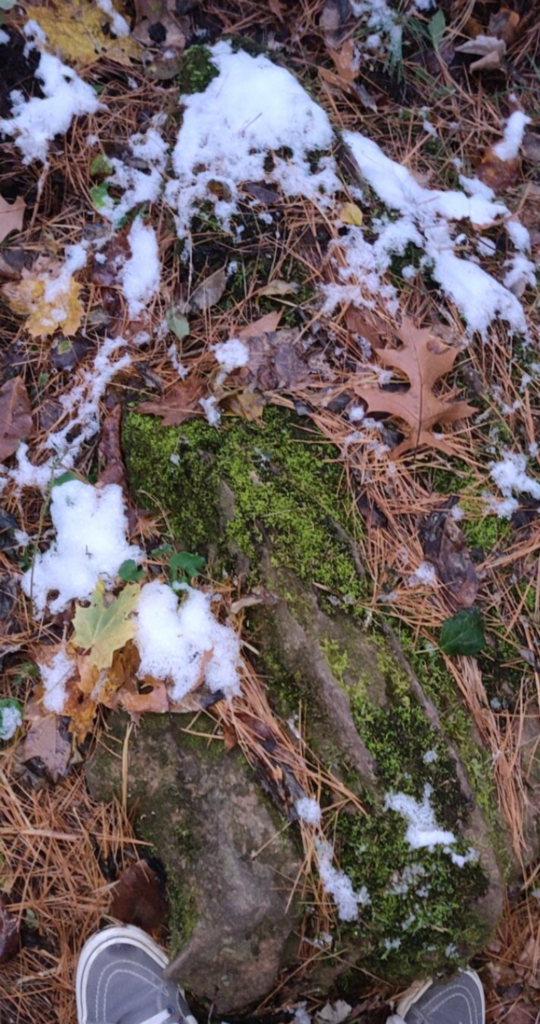
the moss rock update 
a widow-maker can be seen in the white pine 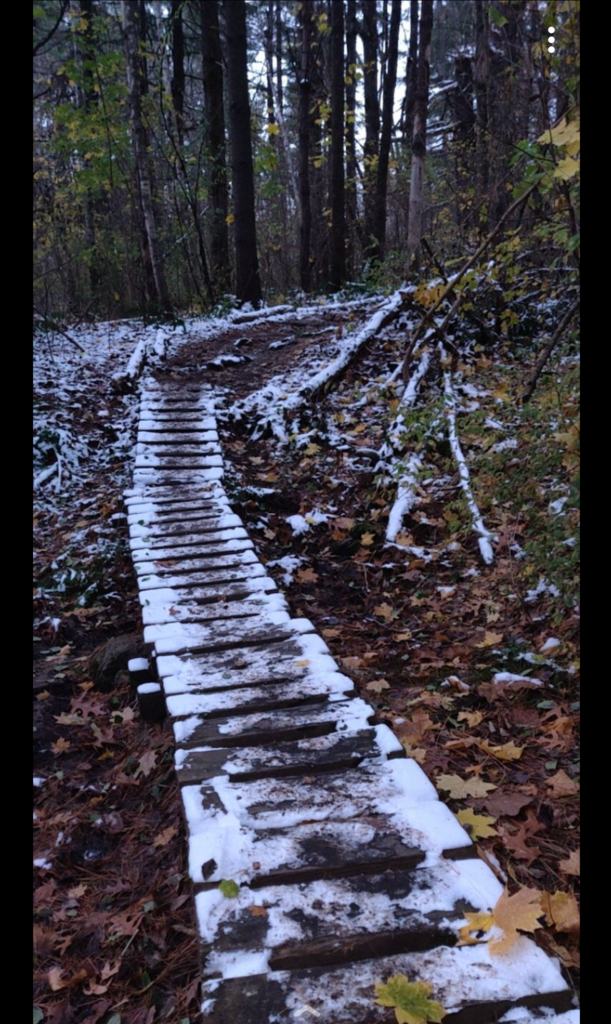
the snow-covered bridge
